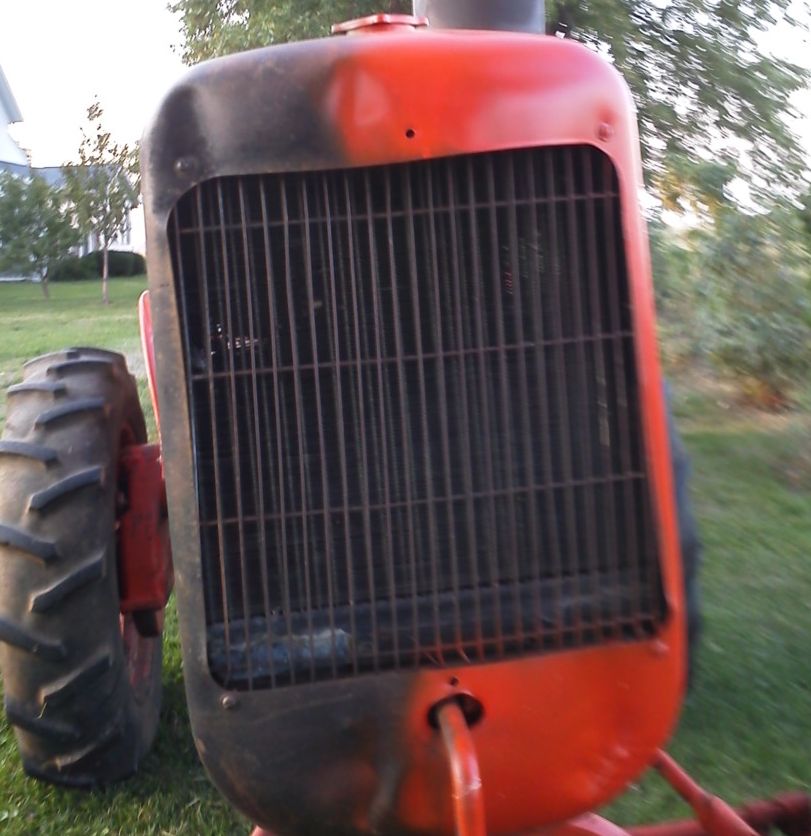|
Generators of this size didn't show up on the dealership's floor in very large quantities, weren't sold in big-box stores, and weren't a high-volume 'special order' for farmers.
This was a rather specific market and NOT 'farm-specific', but suffice to say that Allis-Chalmers was much more of an electrical and power transmission manufacturer than agricultural and industrial machinery.
Generators of this category were frequently 'custom' built per a specification, and those specs often identified what the CUSTOMER dictated... and that being said, your Allis generator MAY have an Allis-built prime mover... or it could have something else. The generator and exciter MAY have been an Allis-made unit, or it may be by someone else. The voltage regulator, control relays, and transfer switch MAY have been made by Allis-Chalmers.
You'd be hard-pressed to find an owner's manual for this bugger, BUT, there's a really good chance you could find books on individual components and diagrams for generic or similar applications.
Voltage regulation on machines like this are typically accomplished at low-level, meaning, you have a main alternator which has a field, and that field's intensity determines output voltage... and that field is energized by an exciter, which is a DC generator typically driven off the same shaft. The Exciter, like the alternator, consists of two windings-one spinning and one not... and ONE of those is a field, and it's intensity, like the main alternator, determine's the excitation output. Typically, this point, is where voltage regulation STARTS... controlling a little current into the exciter field, provides control of exciter output to the main field, which controls alternator output.
So the regulator is usually sensing alternator output, and modulating exciter field input... it's a closed loop feedback.
The regulators of these machines are TYPICALLY mechanical in nature, and fascinating, but not very complex. A common type is the REG-Ohm, which your generator JUST MIGHT have, so I'll describe it, and if yours is newer, it may have something different, but same concept applies.
The regulator has two wires coming from the exciter field... and placed in series with this exciter field is a string of resistors. The resistors are placed in such a way that the resistors can by 'bypassed' by a rolling steel bar, and the bar is on a slightly inclined ramp. When at the bottom of the ramp, the bar shorts out ALL the resistors, allowing full field current. At the top of the ramp, is an electromagnet, fed from the main alternator's output. As alternator output rises, more current flows through the electromagnet, pulling the bar UP the ramp, thus, introducing more resistance INTO the exciter field, which lowers alternator field intensity, and lowering voltage output, which reduces the electromagnet's pull on the bar, so the bar falls back down the ramp.
Somewhere, that bar 'finds' a position where there's balance between the incline, and electromagnetic pull... and this is the point where voltage will be maintained.
Many guys who bring old generators back to life have unstable voltage problems, and most can be traced back to one of just a few things... first, is that the mechanical regulator is in some 'non-level' orientation... either the generator is sitting on a trailer on a hillside, or the rubber vibration-isolator 'feet' are all rotted off and the regulator's being rattled around.
Another common issue, is that the contacts that the rolling bar are rolling on, are all corroded, and either impeding the bar, or preventing it from making reliable shorting contact.
Sometimes, the wiring is just lousy and not allowing the regulator's attracting coil to carry current consistently.
Also, it is likely that worn brushes on the alternator or exciter are dirty enough so that there's a consistent output voltage 'signal' for the regulator to 'follow'... so the reg may be 'hunting'.
NEXT... generators in this size range were frequently equipped to run in 'groups', where they're paralleled together to hold down the entire house loads for large buildings, hospitals, etc... and in order to work in pairs, they had to be able to synchronize their alternation speeds AND balance loads by not 'fighting' between voltage regulators. This was accomplished with special setups of the engine's governors AND their voltage regulators. IF yours was set up to work in a group, and you're now running it solo, you've got some learning, and a readjustment/reconfiguration to perform. Not difficult, but best to understand the master/slave operating theory of your machine's components prior to attempting adjustment.
The Smokstak forum has a segment dedicated to generators of many, many varieties, and there's a unique genre of guys who like working on 'serious' generators over 30KW. IF you choose to pursue this big gal, it would be an excellent place to post pictures of the machine, model number ID plates, any connection diagrams, etc., and most likely, any feller who's worked with a similar machine, or any COMPONENT of your system, will chime in, probably Email you whatever docs they'd have for same.
|









 Topic Options
Topic Options

 Post Options
Post Options Thanks(0)
Thanks(0)





